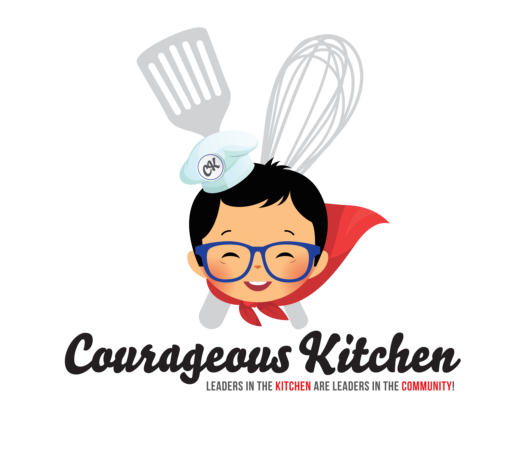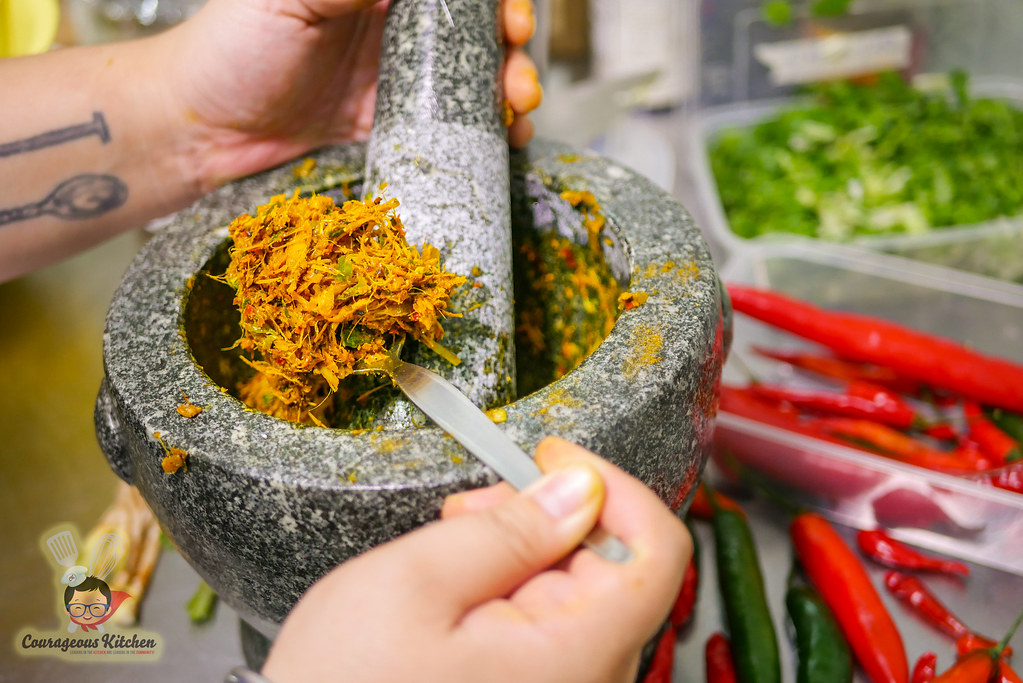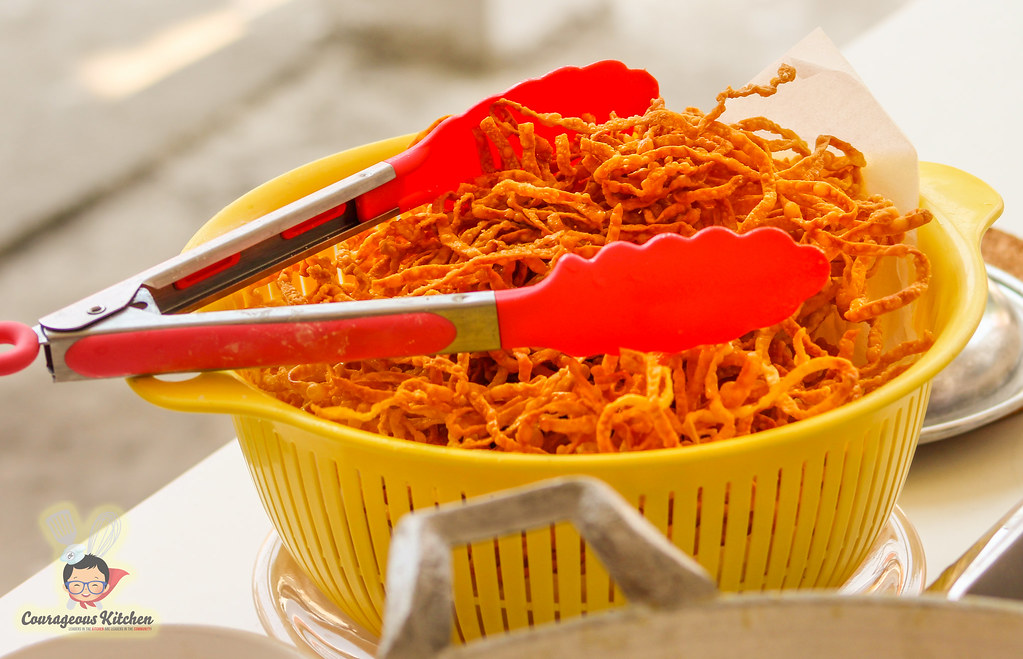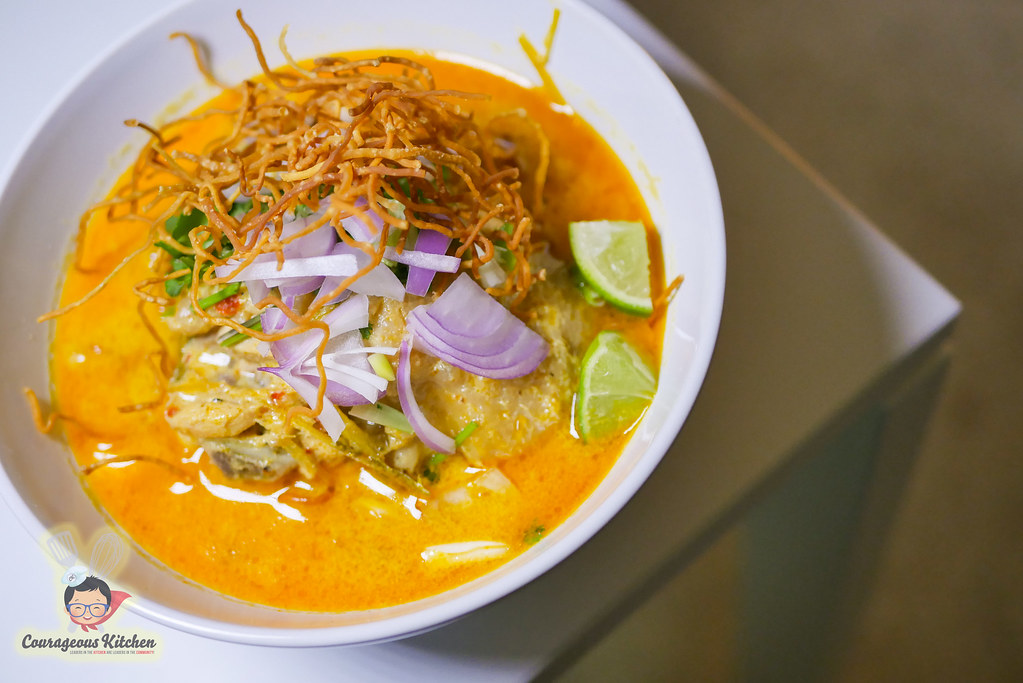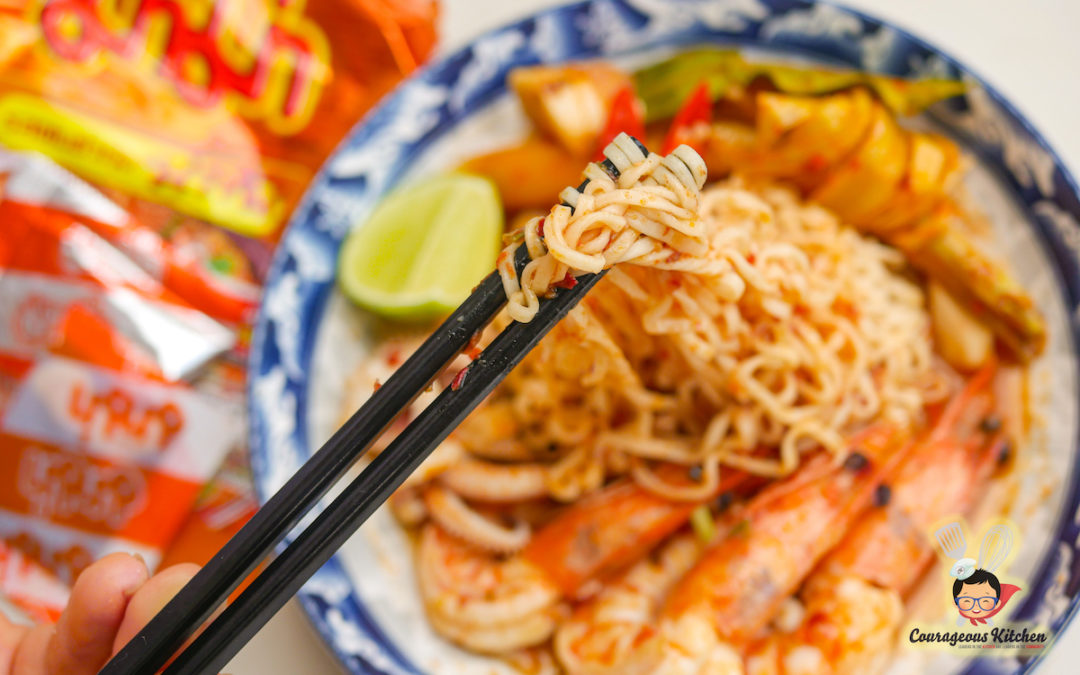
Thailand’s 7 Best Noodle Dishes
We’re lining up our favorite plates of Thai noodles to discuss their origin, ingredients, and sometimes complicated names. This list includes the best noodles that you’ll find stir fried, or served in curry or gravy broth at restaurants in Bangkok or around the country. If you’re a fan of Thai food, read on to learn all about the noodle dishes you should be ordering!
1. Pad Thai ผัดไทย
First, let’s talk vocabulary. The Thai word pad, pronounced ‘phat’, means to vigorously mix over heat. You’ll see this word often in the rest of this article, and when you see it on the menu at your favorite Thai place, you’ll know instantly which dishes are the stir fries. At the top of the list of Thailand’s most popular noodle stir fries is pad thai. Pad thai is easily the most well known Thai dish outside of Asia, but like the flavors of the dish, the history behind these tamarind tinted noodles is complicated.
The second word, thai, referring to the Thainess of the dish is equally is telling. For all the hoopla about authenticity, it turns out pad thai is a fairly recent addition to the Thai food canon. The dish came to fame thanks to a nationalism push, and is seasoned with anti-Chinese sentiment. Long story short, the invented dish may have served to get more Thais cooking their own street food, but isn’t as popular today, as you might imagine.
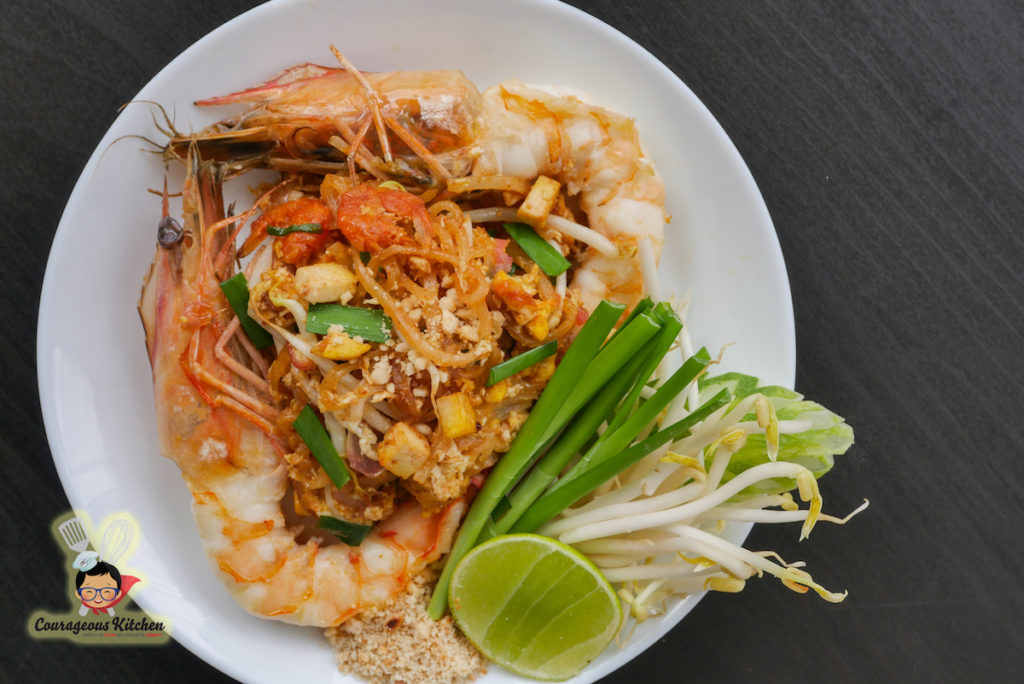
Not the traditional Thai dish you thought? There’s no shame in finding out you’ve been loving a propaganda plate, most of us have! To make matters worse, finding a delicious plate of pad thai in Bangkok is indeed a challenge. The number of ingredients makes it prohibitive to cook with rising food costs, and there are few deterrents to using recipe shortcuts, like ketchup, to improve the taste, color, and shelf life of the renown dish. Add on top disappearing street food culture, and you’ll begin to understand why the quality of the dish varies so widely in Thailand.
There’s certainly more to say about pad thai! We have our own pad thai recipe and would be happy to dive deeper into the nuanced dish in a future cooking class in Bangkok or San Diego.
2. Kanom Jin ขนมจีน
Thais don’t eat pad thai on a regular basis. For their regular lunch and dinner choice, the nation-state turns to a curry noodle dish called ‘kanom jin’ (often written as khanom chin). These noodles lack the international glory many of the others on this list enjoy, but they are by far the most popular domestically.
To enjoy the noodles, simply pour your choice of curry over the top. The most common options include green curry, and the less well known, extremely spicy yellow curry called ‘nam ya kati’. After picking a curry, you top the noodles with the fresh condiments you prefer, often situated on a communal table. The condiments are a mix of ingredients intended either to enhance the flavor, such as lemon basil, or more commonly to aid in the digestion of the oft spicy dish, such as bean sprouts or bitter melon.
KJ noodles aren’t devoid of geopolitical implications either. The dish is often mistakenly translated directly as ‘Chinese snack’. The irony of this lazy translation is that it implies these ethnic noodles originate elsewhere. Only the opposite is true, the noodle made of fermented rice, may be the oldest of those eaten widely by people in South East Asia.
3. Mama Noodles มาม่า
We would be remiss not to mention, that a close runner up for the most popular domestic noodle is one that you may not expect— instant noodles! Much of the popularity of these ubiquitous noodles is due to their price and availability. With the second highest number of 7-11 convenience stores in the world, Thailand’s convenience addiction makes finding a wide variety of instant noodle brands, types, and flavors easy all over the country. The most popular of those choices being the brand named ‘Mama’ noodles.
The brand is so popular that in the context of food, ‘mama’ is almost always a reference to those iconic crinkly noodles, paired with a seasoning pack. There are restaurants in Bangkok popular for serving suped up versions of the noodles with every topping you can imagine— including jumbo seafood. But the noodles also appear in popular Thai dishes made in a hurry at street food stalls.
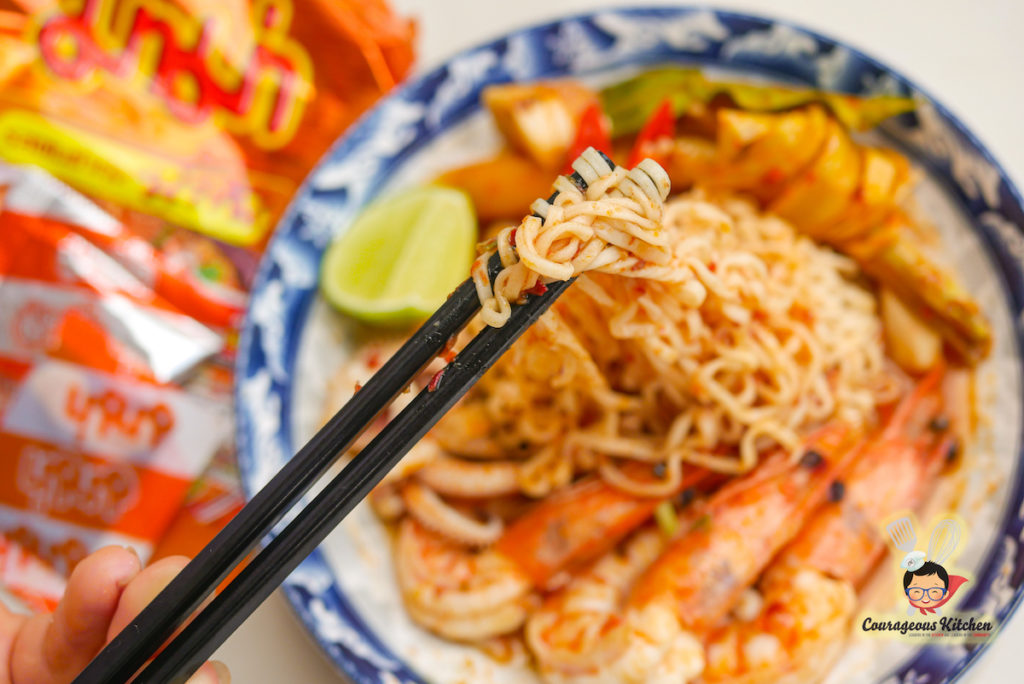
Since they’re so easy to cook, some Thai street food stalls’ entire existence is customizing instant noodle dishes for customers with bonus protein items like hot dogs, poached eggs, minced pork, or the seafood of your choice! You won’t find them often on the menu in fancier restaurants, but you can be assured of their popularity among the Thai populace, whether they be school children, working class, or hungry party goers.
4. Pad See Ew ผัดซีอิ๊ว
Next up is a stir fry dish, iconic for the color of the wide rice noodles used. Pad see ew gets it’s brown tinted noodles from ‘see ew’, which is Thai for soy sauce. But to get your noodles the correct distinctive color, you can’t use just any run of the mill soy sauce. You’ll need to find what Thais refer to as ‘see ew dam’, or dark soy sauce. This particular sauce stands out because of its bitter taste and deep black color. In fact, the sauce is mostly molasses and only a small percentage soy, so be careful when throwing it into your wok, as it’s potent enough to really alter the flavor of a dish.
Pad see ew is the stir fry on this list with the strongest link to Chinese influence. The dark soy sauce, the use of Chinese kale, and the stir fry (aka Chinese wok hei style cooking) cooking method are a sure thumbprint of the migration of centuries of Chinese cooks to Thailand. This means you can find the dish being served in Bangkok street food stalls, which almost pre-date the existence of pad thai. Around the region, you can even find similar dishes in other countries, like Malaysia’s char gway teeo noodles (often spelled char kway teow).
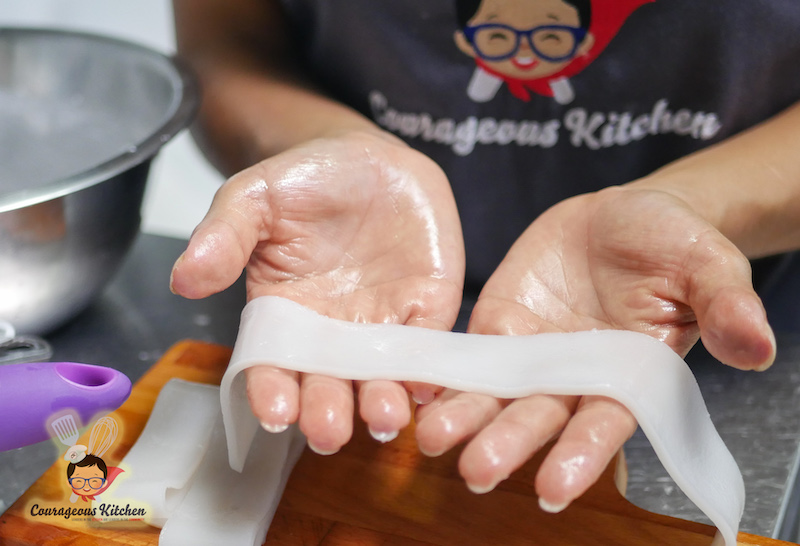
Our favorite part of this popular Thai dish are the noodles themselves. Thais typically make the dish by flash stir frying fresh rice noodles, which begin to meld together from the intense heat, as well as absorbing the stir fry sauces and smoke from the wok. After emerging from the hot wok the plate of noodles is dusted with chili flakes and black pepper, but it may surprise you that this isn’t a spicy dish. The relative mild amount of spice heat makes it an approachable dish for newcomers to Thai cuisine, and a common runner up to pad thai for popularity outside of Thailand.
5. Pad Kee Mow ผัดขี้เมา
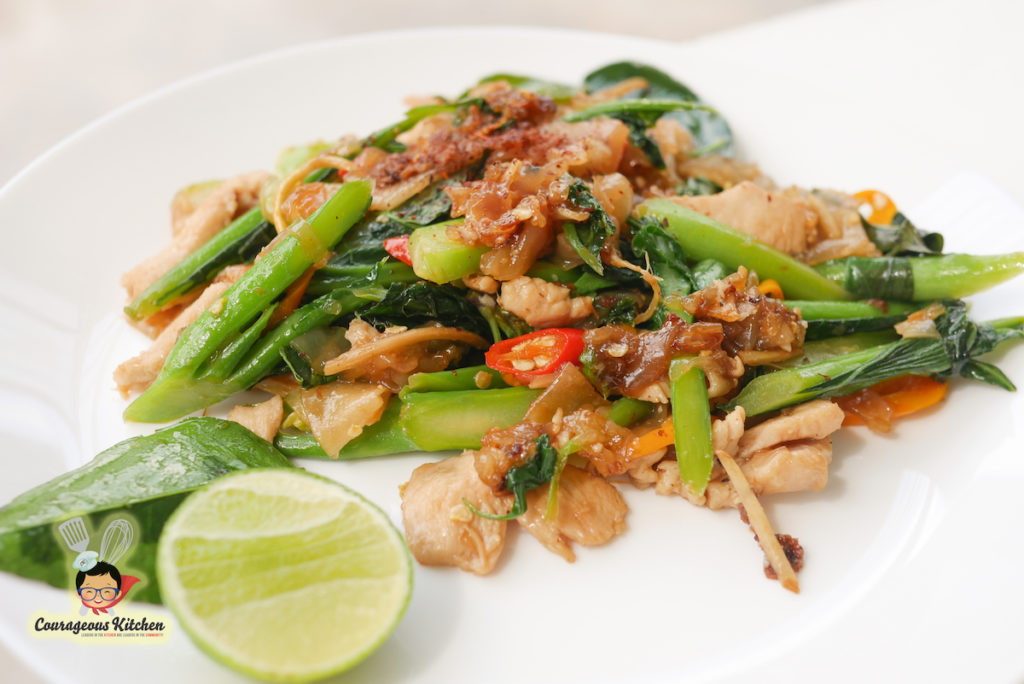
You can’t really talk about pad see ew without bringing up the spicier Thai cousin, pad kee mow. In English these noodles can often be referred to as ‘drunken noodles’, a direct translation from the Thai term ‘kee mow’, meaning someone who is regularly drunk. Alternatively, this could be a reference to dousing the noodles in dark soy sauce, but that isn’t nearly as fun an explanation.
This hangover busting dish is a favorite of mine, because it is a Thai spice lover’s departure from the humble, mildly flavored grand-cestor pad see ew. While you can find similar dishes to pad see ew around the region, this chili fueled plate of noodles is uniquely Thai. So while many will overlook ‘kee mow’ for a calm and delicious pad thai or pad see ew plates, hot headed spice lovers will come to Thailand, and make the version found at Bangkok’s street food vendors their new favorite Thai noodle dish.
What makes pad kee mow so spicy? This heat level doesn’t come from fresh chili alone, but layers of different types of spice. In addition to Thai birds’ eye chili, you have the larger Thai chilis added for color and their mild flavor. But what stands out most is the addition of fingerroot, a gangly root that is more intense than the galangal that flavors your favorite tom yum soup. The fingerroot is paired with intensely peppery, mildly bitter young peppercorn, and together they give the dish a mouth and face numbing type of spice that makes it perfect for the ailing drunk!
Find more details on all the ingredients in our recipe for pad kee mow.
6. Khao Soi ข้าวซอย
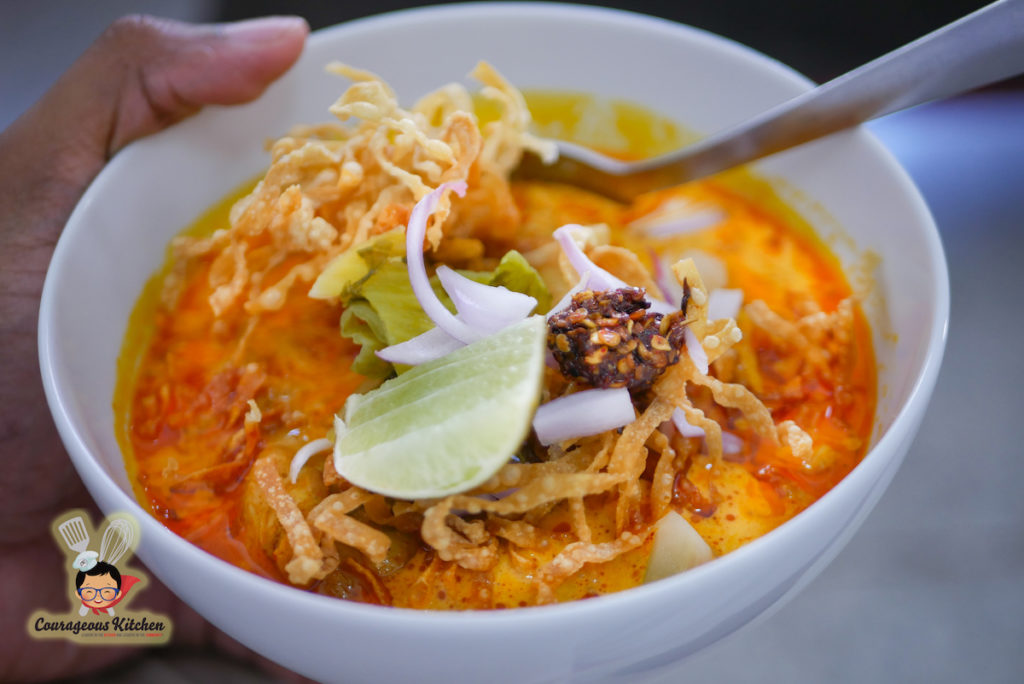
Visitors to Chiang Mai need no introduction to khao soi noodles. Enjoying the creamy curry noodles has become synonymous with visiting the city itself, because a delicious bowl can be troublesome to find or make elsewhere. This is because the noodles are often misunderstood, and have been reinvented several times based on the influx of people in the highlands of south east asia.
Whether you credit the Burmese, Chinese muslims, or some other group with khao soi, a quick taste or glance at the ingredient list is enough to tell you the origin isn’t Thai. The name comes from the Burmese word for noodles, but the current version most popular with tourists looks little like the dishes of the past. Many of the oldest recipes call for the richly spiced curry, reminiscent of Indian or middle eastern curries, and pair the flavor with red meat.
There may be great debate about the origin of khao soi, but the popularity of the dish is undeniably. The mild amount of hot chilies and meaty broth make it appealing to foreigners who fall in love with the dish in their stints in Thailand’s largest northern city. Today you’ll find the most celebrated versions served with chicken, and garnished with fried noodles, pickled shallots, lime, and mustard greens.
7. Khao Piak ข้าวเปียก
The least well known of our favorite noodle dishes is surely ‘khao piak‘ (pronounced KOW bie-ek). Even the wikipedia page on this hearty bowl of rice noodles looks skinny on info! But that doesn’t mean you should be in the dark about these tasty, usually handmade noodles. If you translate the name literally, khao means rice and piak (BIE-ek) means wet. Now wet rice doesn’t sound too appetizing unless you know it’s a reference to the noodles being made of rice flour and tapioca starch, and served in a gravy like broth.
Lately, the little known noodles are having a resurgence, thanks to the increasing popularity of Laotian food, where the dish is often referred to as ‘khao piak sen‘. The country of Laos shares a border with Thailand, and a long history of trade, war, and blending of language, culture, and cuisine. As Thailand has become one of the wealthiest and most developed nations in the region, often the influence of Laotian cuisine get left out of the explanation of dishes that people may assume are authentic Thai recipes, such as papaya salad.
Whether you’ve had them on the Thai or Lao side of the border no matter, this is a special, extra satisfying meal. They’ll make you nostalgic for a hot bowl of chicken noodle soup, except they’re better. When the rice noodles are added to a richly seasoned pork or chicken broth, the starch in them thickens the soup into a flavorful gravy. Since they’re so filling, even families with few resources can stretch this dish into a meal!
Thai Noodle Vocabulary Review
- pad – ‘phat’ – stir fry
- kee mow – a drunkard
- pad kee mow – drunken noodles
- kanom jin (pronounced ‘ka-nom jeen’) – fermented rice noodles
- see ew – soy sauce
- see ew dam – dark soy sauce
- sen yai – wide rice noodles
- khao piak – literally wet rice, a reference to making the noodles by adding boiling water to rice flour
